Ubiquitous, tethered water buffalo lined the highway leading to the city of Jaipur. Fat and seemingly content, these magnificent black glossy cattle lead a relatively happy life in India. Being regarded as a sacred animal in a largely Hindu state, they are at least safe from slaughter. All appeared to be well cared for, well fed and frequently dowsed with water - an essential requirement for these huge beasts to minimise heat retention in the scorching summer climate. Serene pale Zebu-Brahmin cross cattle wandered casually across the road, their white lashed dark liquid eyes calmly defying us to hurry them out of our way.
Stray dogs were everywhere. As in other cities in the northern areas of India, they were in rough condition but none looked starving like those tragic animals we saw in Pakistan. Apparently, they are fed by locals on basic foods such as rice, bread and chapattis.
We saw a few monkeys along the road on our journey, but nowhere were there as many as those we saw in Shimla. They are obviously far too smart to live anywhere other than the luxuriant wet forests of Hamachal Pradesh where they are regularly fed by admiring tourists! As we were to find out, these sneaky little devils are actively and understandably discouraged from the hotels and tourist sites of Jaipur.
We were now in the state of Rajasthan, having crossed the border from Agra in Uttar Pradesh. The rich, flat alluvial countryside was planted with healthy looking cereal crops. Curious round thatched huts dotted the fields, their conical peaks pointed and curved almost as if someone had pinched and twisted them between their thumb and forefinger. In the distance, the occasional harnessed water buffalo could be seen dragging primitive ploughs, tilling the fertile soils. Local village people walked slowly. Rural life seemed at peace with the world, despite a late Monsoon.
Rajasthan or "Land of the Kings" is the largest state by area in the Republic of India, covering some 10% of the country.
The state of Rajasthan was once home to the warrior clan the Rajputs who controlled Rajasthan for more than 1,000 years. Such were their efforts in internal fighting, they later became vassals of the mighty Mughal Empire. Their bravery and sense of honour however was unparalleled and warriors and their wives and children would commit ritual mass suicide or "Jauhar" rather than submit to their enemy. Following the decline of the Mughal Empire, the Rajputs later gained more power by allying themselves with the British Raj who allowed them to operate as independent states. At Independence however, the Rajput states reluctantly joined the new India, and rulers were allowed to retain their titles and property. This system ceased in the early 1970's when Indira Ghandi abolished the annual stipends, rights and privileges of the warrior clans.
The main geographic features are the mighty Thar Desert and the Araveli Range which span through the state from south-west to north-east for more than 850 km. The main economy is based on agricultural and pastoral industries. Wheat and barely crops are widely cultivated, as are pulses, sugar cane, oil seeds, cotton and tobacco. Interestingly, Rajasthan is the biggest wool producing state in India and the main opium producer - and consumer.
Today, Rajasthan's colourful history, magnificent forts, palaces and natural beauty make it one of the most popular tourist destinations in India and tourism makes a significant contribution to the local economy.
We reached the city of Jaipur in the late afternoon. Ravi wanted us to undertake an evening tour of the City Palace but we firmly stood our ground, having been up since 4.00 am to tour the Taj Mahal followed by an extensive visit to the city and palace of Fatephur Sikri. The temperature was still in the early forties and all we wanted to do was to collapse in the cool of our Samode Haveli hotel - which we did.
Bustling, chaotic Jaipur is the capital and largest city of Rajasthan. Founded in 1727 by Maharajah Sawai Jai Singh II the warrior-astronomer ruler of the then capital city of Amber, it is now home to a sprawling population of over three million people. Jaipur was northern India's first planned city. Its impressive design, wide boulevards and grid-like layout was over sighted by the famous architect Vidyadhar Bhattacharya - who interestingly climbed the tall career ladder from a modest accounts clerk to being appointed by the King to the Office of the Chief Architect. In order to protect its security after numerous battles with the Marathas spanning a period from 1659 to 1761, the city was surrounded by huge fortification walls with seven strong gates.
Known popularly as "The Pink City", Jaipur in 1876 was painted pink in a quirky gesture to welcome Edward the then Prince of Wales. Today, it is mainly the Old City that is known by this rather unfitting name. As we came to realise, there is not a lot of fresh pink paint left in the city itself.
Threading through the chaotic streets of Jaipur, we wondered what our Samode Haveli hotel would be like. The city centre certainly did not look like a place that would house a beautiful mansion.
Introducing Rajasthan: Land of the Kings
Tuesday, July 17, 2012
 Jaipur, Rajasthan, India
Jaipur, Rajasthan, India
Other Entries
-
17Kashmir: Tranquility and Terror
Jul 0314 days prior Srinagar, Indiaphoto_camera11videocam 0comment 0
Srinagar, Indiaphoto_camera11videocam 0comment 0 -
18Photo Gallery of Srinagar
Jul 0314 days prior Srinagar, Indiaphoto_camera30videocam 0comment 0
Srinagar, Indiaphoto_camera30videocam 0comment 0 -
19A Police Assault, a Yatra & Zozilla Pass
Jul 0512 days prior Kargil, Indiaphoto_camera22videocam 0comment 0
Kargil, Indiaphoto_camera22videocam 0comment 0 -
20Into Ladakh: "Take Care, Life Has No Spare"
Jul 0611 days prior Alchi, Indiaphoto_camera24videocam 0comment 0
Alchi, Indiaphoto_camera24videocam 0comment 0 -
21Jule (joo-lay) from Ley!
Jul 0710 days prior Leh, Indiaphoto_camera13videocam 0comment 0
Leh, Indiaphoto_camera13videocam 0comment 0 -
22Photo Gallery of Leh
Jul 0710 days prior Leh, Indiaphoto_camera26videocam 0comment 0
Leh, Indiaphoto_camera26videocam 0comment 0 -
23"Luxury Camping" Or a Rough Night in Sarchu
Jul 107 days prior Sarchu Heights, Indiaphoto_camera32videocam 0comment 0
Sarchu Heights, Indiaphoto_camera32videocam 0comment 0 -
24To Manali: "But Sir, We Have a Flight to Catch..."
Jul 116 days prior Manali, Indiaphoto_camera18videocam 0comment 0
Manali, Indiaphoto_camera18videocam 0comment 0 -
25Magical Manali
Jul 116 days prior Manali, Indiaphoto_camera11videocam 0comment 0
Manali, Indiaphoto_camera11videocam 0comment 0 -
26Mandi Town: Frenetic but Friendly
Jul 134 days prior Mandi, Indiaphoto_camera18videocam 0comment 0
Mandi, Indiaphoto_camera18videocam 0comment 0 -
27Shimla: Birthplace of the Indian Partition
Jul 143 days prior Shimla , Indiaphoto_camera8videocam 0comment 0
Shimla , Indiaphoto_camera8videocam 0comment 0 -
28PRIMATE ALERT! Photo Gallery of Shimla
Jul 143 days prior Shimla, Indiaphoto_camera28videocam 0comment 0
Shimla, Indiaphoto_camera28videocam 0comment 0 -
29Toy Train to Kalka & the Shatabdi Express to Delhi
Jul 143 days prior Delhi, Indiaphoto_camera12videocam 0comment 0
Delhi, Indiaphoto_camera12videocam 0comment 0 -
30Introduction to the Mighty Mughal Empire
Jul 161 day prior Agra, Indiaphoto_camera11videocam 0comment 0
Agra, Indiaphoto_camera11videocam 0comment 0 -
31Majestic Mughul Legacies - Akbar's Tomb & Red Fort
Jul 17earlier that day Agra, Indiaphoto_camera34videocam 0comment 0
Agra, Indiaphoto_camera34videocam 0comment 0 -
32Majestic Mughal Legacies - The Taj Mahal
Jul 17earlier that day Agra, Indiaphoto_camera23videocam 0comment 0
Agra, Indiaphoto_camera23videocam 0comment 0 -
33Fatehpur Sikri - "Oh Shit, This is Tooooo Hot!"
Jul 17earlier that day Fatehpur Sikri, Indiaphoto_camera20videocam 0comment 0
Fatehpur Sikri, Indiaphoto_camera20videocam 0comment 0 -
34Introducing Rajasthan: Land of the Kings
Jul 17 Jaipur, Indiaphoto_camera7videocam 0comment 0
Jaipur, Indiaphoto_camera7videocam 0comment 0 -
35The Best Exotic Samode Haveli
Jul 181 day later Jaipur, Indiaphoto_camera17videocam 0comment 0
Jaipur, Indiaphoto_camera17videocam 0comment 0 -
36Hot Forts, Hot Palaces: Amber Fort
Jul 181 day later Jaipur, Indiaphoto_camera27videocam 0comment 0
Jaipur, Indiaphoto_camera27videocam 0comment 0 -
37Hot Palaces: Jal & Hawa Mahals & Pink City Palace
Jul 181 day later Jaipur, Indiaphoto_camera17videocam 0comment 0
Jaipur, Indiaphoto_camera17videocam 0comment 0 -
38Floating to the Call of the Azan
Jul 181 day later Jaipur, Indiaphoto_camera11videocam 0comment 0
Jaipur, Indiaphoto_camera11videocam 0comment 0 -
39Corruption is Rife but That is Life in India
Jul 203 days later Delhi, Indiaphoto_camera18videocam 0comment 0
Delhi, Indiaphoto_camera18videocam 0comment 0 -
40Three Missions in Shanghai
Jul 214 days later Shanghai, Chinaphoto_camera16videocam 0comment 0
Shanghai, Chinaphoto_camera16videocam 0comment 0 -
41Reflections: Restless Lands of Pakistan and India
Jul 225 days later Crowdy Head , Australiaphoto_camera54videocam 0comment 0
Crowdy Head , Australiaphoto_camera54videocam 0comment 0 -
42POSTCRIPT - A Not So Enjoyable Journey....
Nov 21492 days later Crowdy Head , Australiaphoto_camera3videocam 0comment 2
Crowdy Head , Australiaphoto_camera3videocam 0comment 2

 Jaipur, Rajasthan, India
Jaipur, Rajasthan, India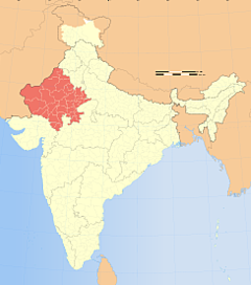
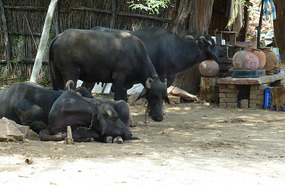

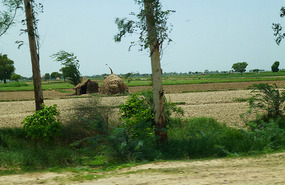

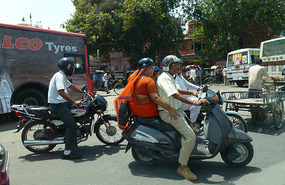
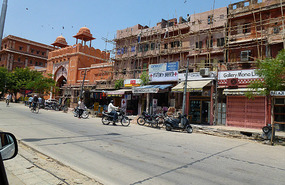



2025-05-22